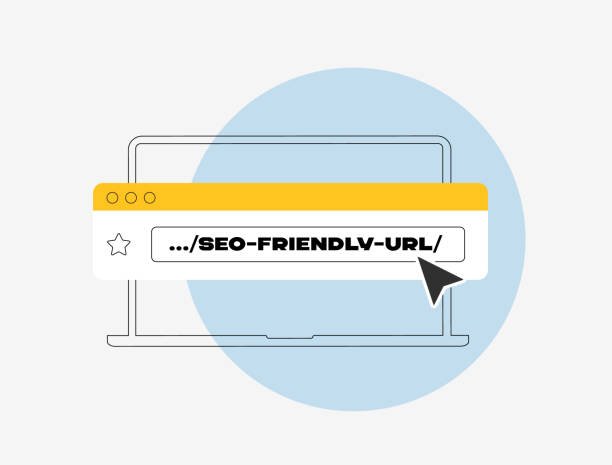Crafting SEO-Friendly Content for Yandex: A Content Strategy Guide
Creating content that performs well on Yandex requires a deep understanding of its unique algorithms and a carefully crafted strategy. In this comprehensive guide, we will take you through each step—from thorough keyword research and writing engaging, authentic content to structuring your articles for maximum visibility. Follow these detailed steps to ensure your content aligns with Yandex’s indexing and ranking factors and effectively reaches your target audience.
Step 1: Conduct In-Depth Keyword Research

1.1 Identify Your Core Topics
- Brainstorm Relevant Themes:
Begin by listing topics related to your niche. Consider what your target audience is interested in and what problems they need solutions for. - Local Relevance:
Focus on subjects that are particularly important to your Russian or Eastern European audience. Local news, regional trends, and cultural events can all serve as valuable content themes.
1.2 Use Russian-Specific Keyword Tools
- Yandex Wordstat:
Utilize Yandex’s own tool to gather keyword ideas and understand search volumes. This tool provides insight into what Russian users are searching for. - Competitor Analysis:
Identify keywords used by top-ranking pages in your niche. Tools like SEMrush or Ahrefs (with Russian keyword databases) can help uncover these insights.
1.3 Focus on Long-Tail Keywords
- Why Long-Tail Keywords Work:
Long-tail keywords are more specific and often less competitive. They reflect natural language queries that real users type into Yandex. - Example:
Instead of targeting a broad term like “travel tips,” use a long-tail keyword such as “best travel tips for Russian families visiting Europe.” This approach helps capture highly relevant traffic.
1.4 Organize and Prioritize Keywords
- Create a Keyword Map:
Organize your keywords by topics and subtopics. This mapping helps you plan your content strategy and ensures that each article targets a specific set of relevant keywords. - Set Priorities:
Focus on high-volume and low-competition keywords initially to build momentum. Regularly review and update your keyword list based on performance data from Yandex Metrica.
Step 2: Write Engaging and Authentic Content

2.1 Embrace Natural, Localized Language
- Write in Fluent Russian:
Ensure your content is written in natural, idiomatic Russian. Avoid overly literal translations and instead use expressions that resonate with local readers. - Cultural Nuances:
Incorporate local slang, idioms, and references to local events or customs. This not only improves readability but also signals to Yandex that your content is relevant to its audience.
2.2 Produce In-Depth, Valuable Articles
- Comprehensive Coverage:
Address topics thoroughly. Provide detailed explanations, actionable tips, and real-life examples that answer your audience’s questions. - Use Supporting Data:
Include statistics, research findings, and case studies. This builds credibility and provides useful information that keeps readers engaged. - Multimedia Integration:
Enhance your articles with images, infographics, and videos. For example, include a step-by-step infographic on how to use a particular keyword tool or a video interview with an industry expert.
2.3 Adopt a Conversational Tone
- Engage Your Readers:
Write as if you are speaking directly to your audience. Use a friendly, approachable tone and encourage reader interaction by asking questions or inviting comments. - Storytelling:
Share personal anecdotes or case studies that illustrate your points. This not only makes your content more relatable but also increases the time users spend on your page.
Step 3: Structure Your Article for Maximum Clarity
3.1 Use Clear, Descriptive Headings
- Organize with Hierarchy:
Use H1 tags for your main title, and H2, H3, etc., for subheadings. Each section should clearly indicate what it is about, helping both readers and Yandex’s crawlers navigate your content. - Descriptive Titles:
Ensure your headings include relevant keywords without being forced. For example, “How to Use Yandex Wordstat for Keyword Research” clearly informs readers about the section’s content.
3.2 Break Content into Digestible Sections
- Short Paragraphs:
Avoid long blocks of text. Use short paragraphs and bullet points to improve readability. - Visual Breaks:
Include images, charts, or lists to break up text. This not only makes your content more appealing but also helps retain reader attention.
3.3 Internal and External Linking
- Internal Linking Strategy:
Link to related articles on your website. This creates a network of content that Yandex can easily crawl and index, while also keeping readers engaged. - Cite Authoritative Sources:
When referencing data or studies, link to reputable external sources. This builds trust and shows that your content is well-researched.
Step 4: Optimize On-Page SEO Elements

4.1 Title Tags and Meta Descriptions
- Compelling and Concise:
Create unique title tags for each page that include your primary keywords. Keep them concise and engaging. - Informative Meta Descriptions:
Write meta descriptions that accurately summarize your article and entice users to click. Ensure they also incorporate relevant local keywords.
4.2 Optimize Multimedia Elements
- Alt Tags for Images:
Use descriptive, keyword-rich alt tags for every image. This not only improves accessibility but also helps Yandex index your multimedia content. - File Names:
Rename image files with relevant keywords (e.g., “yandex-keyword-research-guide.jpg”) before uploading.
4.3 URL Structure and Schema Markup
- Clean URLs:
Use simple, descriptive URLs that clearly indicate the content of the page. Avoid long strings of numbers or irrelevant characters. - Implement Schema Markup:
Add structured data to your pages. This provides Yandex with additional context about your content and can lead to enhanced search result displays (rich snippets).
Step 5: Enhance User Experience and Engagement
5.1 Mobile Optimization
- Responsive Design:
Ensure your website design adapts seamlessly to different screen sizes. Many Yandex users access content via mobile devices, making mobile optimization crucial. - Mobile-Friendly Features:
Use larger fonts, touch-friendly buttons, and a simplified navigation menu for mobile users.
5.2 Improve Page Load Speed
- Technical Optimizations:
Compress images, leverage browser caching, and minimize JavaScript and CSS files. - CDN Usage:
Consider using a Content Delivery Network (CDN) to speed up load times, especially for users located far from your server.
5.3 Monitor and Adjust Based on User Behavior
- Use Yandex Metrica:
Regularly check user engagement metrics such as bounce rate, average session duration, and pages per session. - Iterative Improvements:
Use these insights to refine your content and layout. If certain pages have high bounce rates, consider revising the content or improving navigation to better meet user needs.
Step 6: Regularly Update and Refresh Your Content
6.1 Keep Your Content Current
- Timely Updates:
Regularly review and update your articles to reflect the latest trends, data, and changes in your niche. This signals to Yandex that your content is fresh and relevant. - Seasonal Content:
Create periodic updates or seasonal guides that address current events, local holidays, or emerging topics.
6.2 Foster Community Engagement
- Encourage Comments:
Invite readers to leave feedback, ask questions, or share their experiences. Responding to comments can increase engagement and provide valuable insights. - Social Sharing:
Make it easy for users to share your content on social media. Increased social signals can indirectly boost your rankings on Yandex.
6.3 Analyze Performance and Iterate
- Use Analytics Tools:
Regularly monitor performance using Yandex Webmaster Tools and other analytics platforms. Identify which topics and formats perform best. - Continuous Improvement:
Experiment with different content styles, update underperforming pages, and consistently refine your approach based on data.
Conclusion
Crafting SEO-friendly content for Yandex is an ongoing process that starts with deep keyword research and continues through the creation of engaging, well-structured, and technically optimized content. By following these steps—researching keywords, writing in natural and engaging Russian, structuring your articles effectively, and continually refining your strategy based on user behavior—you can build a solid foundation for higher rankings on Yandex.
Stay proactive in monitoring trends and performance metrics, and always be ready to adapt your content strategy to meet the evolving requirements of Yandex’s search algorithms. With persistence and attention to detail, your website can achieve a stronger online presence and reach a broader audience in the Russian market. Happy content crafting and optimizing!







